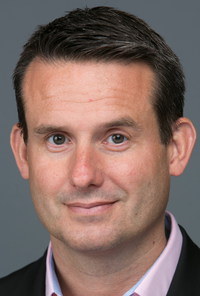Seek Investors Aligned With Your Interests, Not Their Egos
 In the early 1970s, the Seven-Up Company devised an ingenious plan to
market its flagship soda. The campaign was so successful it eventually
catapulted 7-Up's sales to rival that of both Coke and Pepsi, making
it the third most popular soft drink in the US.
In the early 1970s, the Seven-Up Company devised an ingenious plan to
market its flagship soda. The campaign was so successful it eventually
catapulted 7-Up's sales to rival that of both Coke and Pepsi, making
it the third most popular soft drink in the US.
The company hired the Dominican
actor Geoffrey Holder, who delivered the commercial's signature tagline
with memorable panache, “Maaarvelous,
absolutely maaarvelous.”
Overnight, “maaarvelous,” spoken in an exaggerated Caribbean accent,
became a national catchphrase.
What made the commercials noteworthy
was not their charismatic pitchman. It was the fact that the Seven-Up
Company defined its product by describing what it was not, via
the “UnCola” label. When evaluating a potential Institutional
Investor, entrepreneurs should consider what they are not, as
much as what they are. Entrepreneurs in search of startup capital
are well served to seek an UnVentureCapitalist (UnVC), an investor who
understands and appreciates the unique benefits of capital efficiency.
Collapsing Startup Costs
Because of the advancements
in cloud computing by companies like RightScale and open source software such as MySQL, the costs to create a scalable web
service have decreased by a factor of ten since the year 2000. When
we launched GoToMyPC in 2001, we were forced to purchase
hundreds of servers and pay expensive hosting fees to third-party datacenters.
We also incurred substantial software licensing charges from Sun Microsystems,
Microsoft and Oracle. The disappearance of these legacy costs has spawned
a legion of Capital Efficient Startups (CESs), described more fully
in Pour
And Stir. Founders
of a CES should pursue investors that are best described as not sharing
the traits of traditional venture capitalists, as described below.
Company Friendly
– Seek investors who demonstrate with their actions, and not solely
their words, an entrepreneur-centric approach. For instance, a company-friendly
investor will typically only participate in a follow-on funding round
beyond their pro rata participation with the Founders' explicit approval.
This approach ensures that
the investors' advice regarding future funding events is not self-serving.
Investors that do not invest beyond their pro rata share are relatively
indifferent as to a follow-on funding round's valuation. Investors
that insist on investing more than their pro rata allocation in follow-on
rounds have an incentive to compress the company's valuation, in order
to maximize the percentage ownership acquired by their investment. Such
depression of funding valuations increases the entrepreneurs' relative
dilution.
Small Rounds,
Aligned Interests – CES entrepreneurs who have previously
participated in large funding rounds with high valuations appreciate
the direct correlation between the post-money valuation of their latest
funding round and the range of financial outcomes that will be acceptable
to their investors.
Although it may initially sound
counter-intuitive, large funding rounds at high valuations can actually
decrease your chance of success, rather than increase it. For instance,
I recently met a young CEO who had previously founded a company that
raised a sizable round at a $30 million pre-money valuation from two
large, Bay Area VC funds. Shortly thereafter, the company received an
acquisition offer which would have put over $15 million into the Founder's
pocket.
When the CEO excitedly called
his venture capitalists, he was shocked when they literally laughed
in his ear. When their laughter subsided, they condescendingly explained
that they did not invest in his company to get a “2 or 3x multiple
on our money.” The company was subsequently sold for far less than
the total capital invested in the business. Rather than walking away
a decamillionaire, the Founding CEO lost a significant amount of his
own money, as well as that of his friends and family. This CEO is now
looking to fund a CES and he is not interested in a large round or a
particularly high valuation.
Funding Paths To Profitability,
Not Burn Rates – UnVCs do not encourage entrepreneurs to develop
large cash burn rates that must be fueled with future funding rounds.
Although this can be an effective way for large Institutional Investors
to efficiently deploy their capital, it reduces the spectrum of acceptable
exits and significantly dilutes the entrepreneurs' ownership stake,
as depicted in the following chart.
Assume your investors will
not be satisfied with anything less than a 5x return. Thus, if they
invest $10 million and own 35% of your company, your adVenture's exit
must be at least $140 million (($10 million x 5) / 35%). Per the above
data, such exits account for less than 30% of all recent VC-backed exits.
Conversely, if you execute your go-to-market strategy with investments
totaling $3 million, you disproportionally expand the spectrum of potentially
acceptable exits without limiting the size of your exit.
Smaller funding rounds with
modest valuations often results in less dilution for the Founders
and their employees. However, the most effective way to minimize dilution
is to extract capital from customers' pockets. CESs often devise short
and direct paths to revenue as a means of balancing dilution with funding
an optimal growth trajectory.
Management Is Not
Fungible – UnVCs tend to invest in serial entrepreneur teams,
not market spaces or ideas. Such firms do not typically enter into investments
with the intention of replacing members of the management team with
either their own executives “in residence” or from their professional
network. This approach actually increases the company's execution
risk, as significant uncertainty is inherent whenever an ad hoc team
is formed. When a senior executive is “transplanted” into an existing
team, the risk that the transplant will be “rejected” should not
be underestimated.
When entrepreneurs are viewed
by investors as their partners and not their subordinates, a healthy,
long-term and mutually beneficial relationship often develops. When
entrepreneurs feel they serve at the whim of their investors, trouble
(especially for the entrepreneurs), usually ensues.
Multiple Winners
– Certain markets lend themselves to one or two companies owning their
space, such as eBay, You Tube and Twitter. UnVCs do not demand that
entrepreneurs pursue such winner-take-all strategies. Many large-fund
venture capitalists overly value grand slam outcomes, as they can be
career-building investments. An investor looking for a career-making
deal might encourage you to take imprudent chances in the hopes you
are the sole winner in a highly competitive and capricious market. If
you fail, their downside is minimal. They will remove your company's
logo from their website and try to forget they ever made the investment.
For you, the impact of a negative outcome is a bit more tangible and
dramatic.
Bring In
The Fences
The fact that capital efficient
businesses raise modest amounts of money does not necessarily result
in smaller outcomes. You can achieve “homerun” returns with such
adVentures, without having to hit the ball as far. By minimizing your
dilution and aligning your company with investors who appreciate the
decreased risk associated with a broad spectrum of outcomes, you effectively
bring the homerun fence in from 400 feet to 40 feet. What would be a
double or even a pop fly at an overly capitalized business can be a
homerun at a CES.
Venture Capitalists are held
in low regard by many entrepreneurs for a reason. Money and power are
strong corruptive agents. However, even at the most traditional of venture
firms, UnVCs are emerging.
When Charles Grigg invented 7-Up in 1929, he originally called it “Bib-Label Lithiated Lemon Soda” in homage to the mood altering lithium, which it liberally contained. The formulation proved effective as its initial positioning was as a hangover cure. Unfortunately for stressed out CES entrepreneurs, lithium was removed from 7-Up in 1950.
Geoffrey Holder's tagline was eventually changed to, “Maaarvelous, the smell of success is never too sweet.” As any CES entrepreneur can attest, with enough sweet success, you will never pine for the days when 7-Up was lithiated.
John Greathouse has held a number of senior executive positions with successful startups during the past fifteen years. At Computer Motion (RBOT), he was the CFO and VP of Business Development. At Citrix Online (CTXS - formerly Expertcity), Greathouse served as CFO and SVP of Strategic Development. At CallWave (CALL), he served as the SVP of Sales & Bus Dev. In his capacities at Computer Motion and Citrix; Greathouse spearheaded transactions which generated more than $350 million of shareholder value, including Computer Motion's initial public offering and the sale of Expertcity to Citrix for over $230M. Greathouse is a Partner at Rincon Venture Partners (www.rinconvp.com">http://www.rinconvp.com">www.rinconvp.com).
 Tony Greenberg
Tony Greenberg
 Ivan Nikkhoo, Managing Partner – Navigate Ventures
Ivan Nikkhoo, Managing Partner – Navigate Ventures Michael Sherman, Neil Elan and Karine Akopchikyan
Michael Sherman, Neil Elan and Karine Akopchikyan Alejandro Guerrero
Alejandro Guerrero Eric Eide, Alliance for SoCal Innovation
Eric Eide, Alliance for SoCal Innovation Kevin DeBre
Kevin DeBre Braven Greenelsh
Braven Greenelsh Rob Freelen, Los Angeles Market Manager, Silicon Valley Bank
Rob Freelen, Los Angeles Market Manager, Silicon Valley Bank Braven Greenelsh
Braven Greenelsh Kaäre Wagner, Silicon Valley Bank
Kaäre Wagner, Silicon Valley Bank Al Guerrero, Silicon Valley Bank
Al Guerrero, Silicon Valley Bank Rob Freelen, Los Angeles Market Manager, Silicon Valley Bank
Rob Freelen, Los Angeles Market Manager, Silicon Valley Bank Sid Mohasseb
Sid Mohasseb William Hsu
William Hsu Braven Greenelsh
Braven Greenelsh Dinesh Ravishanker
Dinesh Ravishanker Dina Lozosfky
Dina Lozosfky Melinda Moore
Melinda Moore Ivan Nikhoo
Ivan Nikhoo Jaspar Weir
Jaspar Weir Erik Caso
Erik Caso Tracy Olmstead Williams
Tracy Olmstead Williams Dave Berkus
Dave Berkus Bernard Luthi
Bernard Luthi Peter Cowen
Peter Cowen Nick Hedges
Nick Hedges Eric Larsen
Eric Larsen Michael Terpin
Michael Terpin Steve Reich
Steve Reich